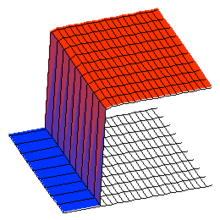I am currently collecting data from the lime producer.
I don't mind the idea of creating an alternative to the solar oven. All this can be indicated in the terms of reference of the study that we are currently preparing.
What interests me today is to find the resource person (s) to do this study. It is a consultant mission with payment of fees, mission costs and air ticket supported. If your job is in this field and this project interests you, you can let me know.
All ideas are welcome to improve the terms of reference of the study and to understand what will be expected.
Thanks,
chatelot16 wrote:you can give information on the furnaces currently used and especially on the consumption of wood and the production of lime (or brick)
the mirror surface is expensive and the amount of scrap to build a large dish also
the solar project deserves to be studied but we must also consider progress simpler
for lime: manufacture of charcoal by pyrolysis, and continuous lime kiln where burnt charcoal mixed with limestone to be cooked: excellent thermal efficiency, consumption 10 times lower than a separate wood fireplace
making charcoal by pyrolysis produces gas, methanol and acetone, instead of smoking as it is unfortunately everywhere
the construction of a wood pyrolysis plant not only reduces the consumption of wood in the lime kiln, but also reduces the amount of wood needed for all charcoal users in Africa!
the use of charcoal is often criticized: it is however the best fuel ... it is only the (old) archaic manufacturing method which is bad
I replace old with archaic because pyrolysis is old too: we called it wood distillation in 1850 when it produced the spirit of wood, old name of the alcol to burn
in 1850 this method was not profitable for charcoal because of the high price of the necessary material
today the material is cheaper and energy becomes more expensive, it changes everything
pyrolysis of wood is also interesting to do by solar method: instead of wasting part of the wood to heat it itself, we heat by the sun and we keep all the combustible gases produced for something else: for example heating a brick at night when the sun is down
the advantage of the gas produced by the pyrolysis of wood is that it can be stored to supply the oven continuously
I tried 15 years ago to start this kind of manufacturing of charcoal in France ... but impossible to build something in France ... steeped in regulations that bite the tail
difficult to build also in africa where everything is more expensive because of the lack of everything



